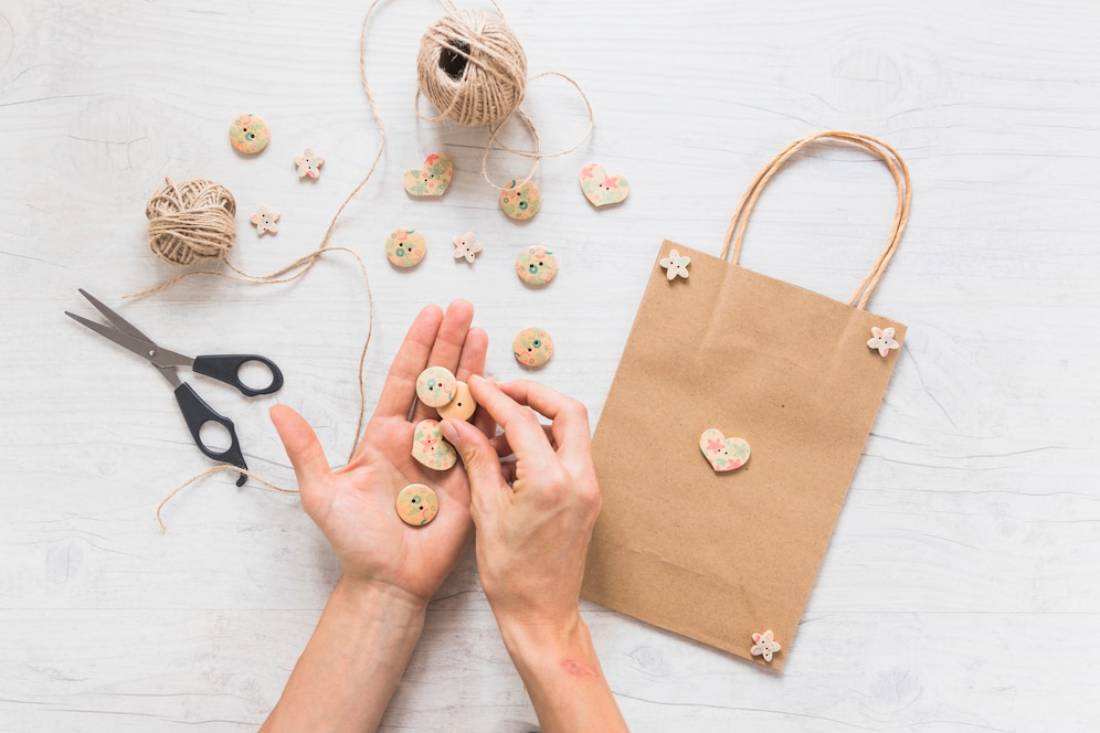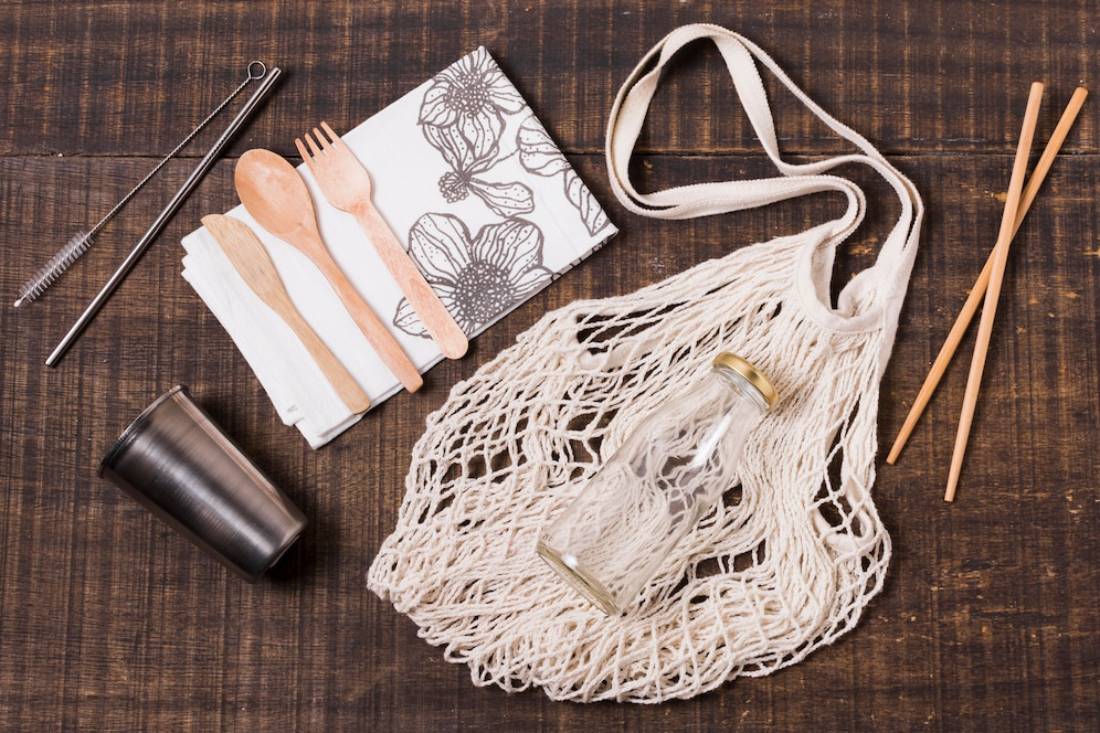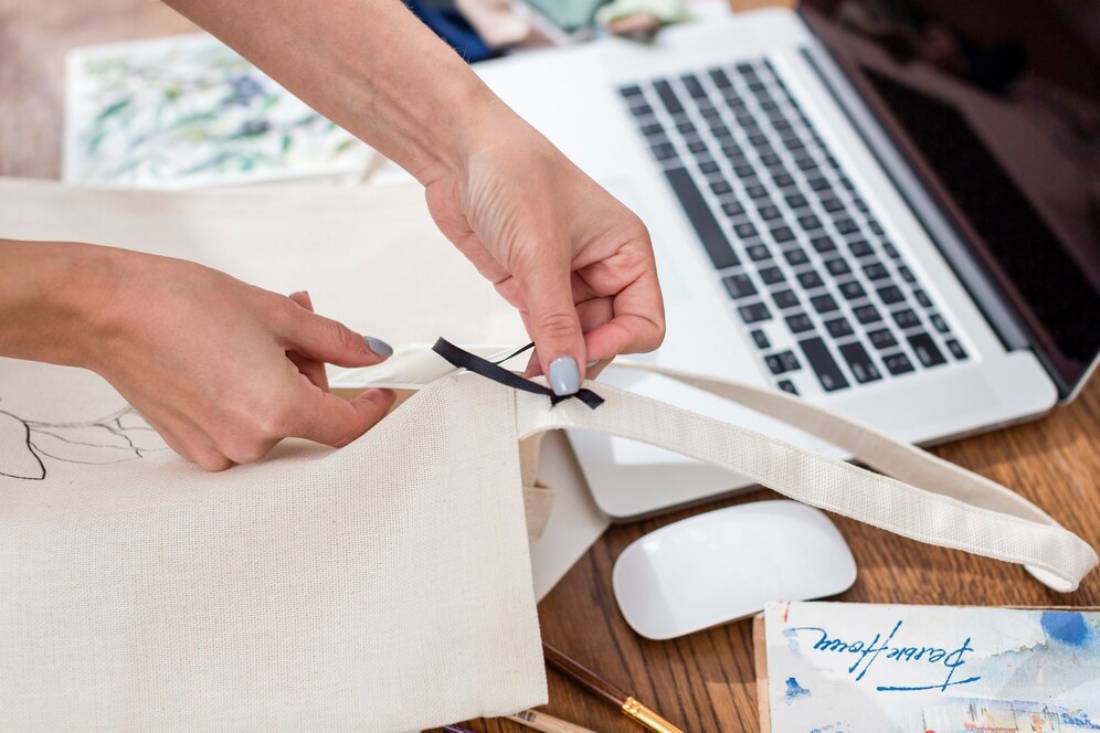Tote bags are the unsung heroes of style and utility. A handmade fabric bag embodies a chic, eco-conscious choice. They do it all, perfect for market days, sandy beaches, or speedy errands. If you love sewing or want a fun DIY project, making your tote bag is a great skill to learn.
Crafting your tote bag isn’t merely a chic statement. It’s a vibrant wave in the fight against plastic pollution. Reusable fabric totes not only reduce waste but also unleash your inner artist. They become canvases for your creativity! Embracing sustainability, these bags go the extra mile. Not to mention, they make delightful, personalised gifts for any occasion. Celebrate style and the planet, one tote at a time!
This guide includes a simple sewing bag tutorial. It will help you make a stylish and sturdy DIY tote bag from scratch. Whether you’re an expert or just starting out, this article provides all the details you need for a successful project.
Quick Guide: 7 Simple Steps to Sew a Tote Bag
- Choose Your Fabric – Use canvas, cotton, denim, or linen for strength and style.
- Cut Your Pieces – Standard size: 16″x14″ for body, 24″x2.5″ for straps.
- Make the Handles – Fold, press, and topstitch for a sturdy finish.
- Sew the Body – Join front and back panels, and optionally add lining.
- Box the Corners – Create a flat bottom for better shape and storage.
- Attach Handles – Sew handles with reinforced X-stitches for durability.
- Assemble & Finish – Stitch the lining to the bag and topstitch the top edge.
Pro Tip
Want a structured look? Add fusible interfacing between fabric layers—it helps the bag hold its shape and look polished, especially with lightweight fabrics.
Important Note
Always pre-wash your fabric before cutting and sewing. This prevents shrinkage and helps the final tote bag maintain its shape and size after washing.
Materials and Tools Needed

Before diving into the sewing process, gather the essential materials and tools. Choosing the right materials can significantly impact your bag’s durability, appearance, and usability.
Materials:
- Fabric (cotton, canvas, linen, or any sturdy material): The main component of your tote bag. Consider your intended use before selecting a fabric.
- Lining fabric (optional but adds durability and style): A contrasting or patterned lining enhances the look.
- Thread (for a decorative touch): Use high-quality polyester or cotton thread for lasting durability.
- Interfacing: Fusible or sew-in interfacing adds stability to soft fabrics.
- Handles/Straps (fabric, webbing, or leather): Sturdy straps ensure comfortable carrying, and they can be decorative as well.
- Pins or fabric clips: To hold fabric pieces together while sewing.
- Tailor’s chalk or fabric marker: Essential for marking measurements and sewing lines accurately.
Tools:
- Sewing machine (or needle if hand-sewing): A basic sewing machine with a straight stitch function is sufficient.
- Fabric scissors or rotary cutter: Sharp scissors ensure clean cuts, while a rotary cutter is excellent for precision.
- Iron and ironing board: Pressing seams improves the final finish.
- Measuring tape or ruler: Accurate measurements lead to a well-proportioned bag.
- Seam ripper (for corrections): A must-have for fixing mistakes and ensuring a professional-looking result.
Step-by-Step Guide to Making a Tote Bag

Step 1: Choose Your Fabric
The type of fabric you select will determine the bag’s sturdiness and appearance. For a strong and long-lasting tote, consider using:
- Canvas: Heavy-duty and durable, ideal for shopping totes and book bags.
- Cotton: Lightweight and easy to sew, perfect for everyday use.
- Linen: Stylish and breathable, great for summer totes.
- Denim: Provides a structured look and added durability.
For added strength, consider using interfacing between layers or adding a lining. If using a lightweight fabric like cotton, a layer of fusible interfacing will help maintain the bag’s shape.
Step 2: Measure and Cut the Fabric
For a standard-sized tote bag, use the following measurements:
- Main body: 16″ x 14″ (cut into two pieces)
- Lining fabric: 16″ x 14″ (optional, cut two pieces)
- Handles: 24″ x 2.5″ (cut two pieces)
If you prefer a larger or smaller bag, adjust the measurements accordingly. Be sure to leave a 1/2-inch seam allowance for all pieces.
Step 3: Prepare and Attach the Handles
- Fold the handle strips in half lengthwise, press with an iron, then open.
- Fold each side toward the centre crease and press again.
- Topstitch along the edges for a neat and durable finish.
- If using webbing or leather straps, cut them to the desired length and set them aside for later attachment.
Step 4: Sew the Body of the Bag
- Place the main fabric pieces right sides together.
- Sew along the sides and bottom edges using a 1/2-inch seam allowance.
- If using a lining, repeat the process with the lining fabric.
Press the seams with an iron to create a clean and professional look.
Step 5: Create a Boxed Bottom
For a more structured bag, create a boxed bottom:
- Flatten one corner of the bag so the side and bottom seam align.
- Measure 2 inches from the corner and mark a line.
- Sew across the line and trim the excess fabric.
- Repeat on the other side.
This step ensures your bag has a flat bottom, allowing it to stand up better when filled.
Step 6: Attach the Handles
- Pin the handles onto the right side of the fabric, spacing them evenly, about 3 inches from each side seam.
- Sew them securely by reinforcing them with extra stitching, making an X-shape at the attachment points for added durability.
Step 7: Assemble the Lining and Outer Fabric
- Place the outer bag inside the lining with the right sides facing each other.
- Sew along the top edge, leaving a small gap for turning.
- Turn the bag inside out, then topstitch around the edge for a clean finish.
Design Variations and Customisation Ideas

1. Add Pockets
- Sew a simple patch pocket onto the lining for quick-access items.
- Create a zippered pocket for extra security.
- Add an external pocket with decorative stitching.
2. Use Different Strap Styles
- Try leather straps for a sophisticated look.
- Make an adjustable strap with buckles for versatility.
- Sew padded handles for extra comfort.
3. Embellish Your Bag
- Embroidery: Personalise with initials or floral designs.
- Appliqué: Add fabric shapes for a unique touch.
- Fabric paint or stamping: Make a patterned design for a fun, artistic feel.
4. Experiment with Fabric Combinations
- Use contrasting fabric for the lining and straps.
- Try patchwork for a bohemian style.
- Mix textures like denim and lace for a creative twist.
FAQs About Making Tote Bags
1. How Long Does It Take to Make a Tote Bag?
For beginners, making a basic tote bag can take 1-2 hours, while advanced sewers can finish in under an hour.
2. What’s the Best Fabric for a Durable Tote Bag?
Canvas, denim, and thick cotton blends work best for durability.
3. Can I Sew a Tote Bag Without a Sewing Machine?
Yes! While it takes longer, hand-sewing with strong stitches can create a sturdy bag.
4. How Do I Make My Tote Bag More Sustainable?
Use upcycled fabric, repurpose old clothing, or choose organic materials.
5 Frequently Asked Questions (FAQs)
1. How long does it take to make a tote bag?
Beginners may take 1–2 hours for a basic design, while more experienced sewers can finish in under an hour.
2. What’s the most beginner-friendly fabric?
Cotton is the easiest to work with—it’s soft, stable, and widely available.
3. Can I hand-sew a tote bag without a sewing machine?
Yes! Use a strong backstitch or running stitch. It will take longer but can still result in a durable tote.
4. How can I make my tote bag washable?
Choose machine-washable fabric like cotton or canvas and avoid leather or non-washable embellishments.
5. How do I personalise my DIY tote bag?
Try embroidery, appliqué, painted designs, or adding custom pockets or patterned linings.
Carry Your Creativity: Make Your Own Tote Bags!
Creating a DIY tote bag is a rewarding project that allows for endless creativity. Sewing your tote lets you create an eco-friendly bag, a stylish accessory, or a personal gift. You control the design and quality.
Now that you have all the necessary knowledge, it’s time to gather your materials and start crafting! Have fun sewing, and don’t forget to proudly share your handmade fabric bag!


